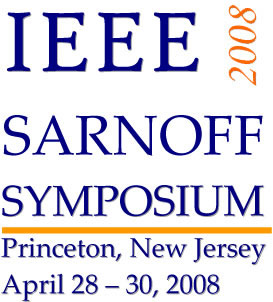| Security in Wireless Networks. |
Panos Papadimitratos Duration: 3.0 hours |
| Summary |
Our network access habits have been changing significantly over the last few years: 20 million wireless-enabled computers and 150 thousand locations for wireless broadband Internet access were available worldwide in 2006. At the same time, an increasing number of wireless community networks are being deployed, portable digital assistants are equipped with radio and infrared transceivers, cellular telephones offer alternative ways of data communication, and wireless sensing and actuating devices are becoming commonplace at home and in factories and hospitals. Overall, the network itself undergoes a gradual transformation: devices collaborate to support basic networking operations, i.e., routing and data forwarding and dissemination, essentially becoming the network. Mobile ad hoc networking will play a central role, enabling communication across multiple wireless links (hops) in a self-organized manner, without a fixed infrastructure. However, assuming that network entities participate voluntarily and assist the network operation is utopian, as experience from the (wire-line) Internet teaches. Compared to traditional networks, ad hoc networking infrastructures are less protected and hard to monitor and manage. The challenge lies exactly in securing the ad hoc network operation, because any malicious or selfish network entity can disrupt, degrade, or even deny communication of other entities. Security is paramount for both civilian and tactical applications. Users would have no incentive to embrace new products if, for example, they cannot access their services and get the quality they pay for or if their privacy is at stake. Similarly, a General or a Police Commissioner would not endorse networking technologies that do not guarantee secure and reliable communications in a battlefield or an emergency situation. This is particularly true for the emerging technology of Vehicular communications (VCs), with vehicles and roadside infrastructure units equipped with sensors, computers, and wireless transceivers enabling a range of applications that enhance transportation safety and efficiency. VCs offer a rich set of tools but also make possible a formidable set of abuses. For example, an adversary could 'contaminate' large portions of the VANET with false information; or, intercept vehicle-originating messages, track the vehicle location and transactions, and infer sensitive information about their passengers. Without security mechanisms, VCs can make antisocial and criminal behavior easy, essentially jeopardizing the benefits of the VCs systems deployment. In this tutorial, we discuss why it is necessary to redesign security for ad hoc networks, and present basic concepts and protocols from the literature on how to thwart attacks. We focus on fundamental security issues, including: the establishment of secure associations among nodes, the secure discovery of communication paths in the network, that is, of neighbor and route discovery, and the security of data communications. Finally, we discuss briefly the new and uniquely constrained problem of how to secure vehicular communications, we consider especially the strong privacy concerns there system raise, and discuss how to address them. |
| Short Bio: Panagiotis Papadimitratos received his PhD degree in Electrical and Computer Engineering from Cornell University Ithaca, NY, in 2005. Panos is currently a senior researcher with the School of Computer and Communication Sciences at EPFL and the Laboratory of Computer Communications and Applications. His research is concerned with networking protocols, network security, ad hoc and sensor networks, and wireless and mobile systems. He has authored more than 40 technical publications on these topics. He has served in the technical program committees of numerous conferences and workshops, among which are ACM MobiHoc, ACM ASIACCS, ACM WiSec, ACM VANET, and IEEE INFOCOM. He has delivered several invited talks and lectures, including a tutorial on security and cooperation in wireless networks delivered at ACM MobiCom 2007. His personal website is https://people.epfl.ch/panos.papadimitratos. |
sarnoff.symposium@ieee.org







